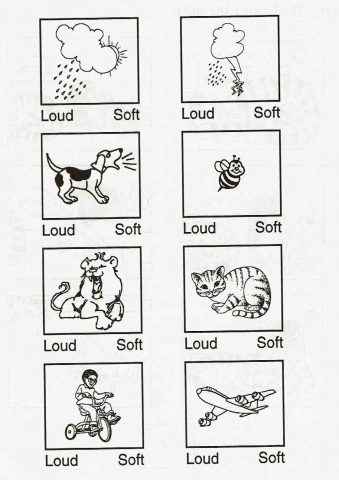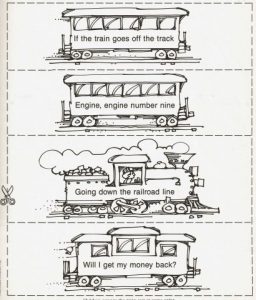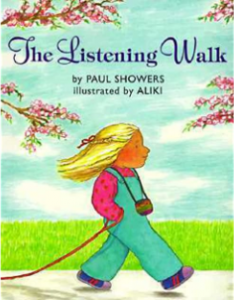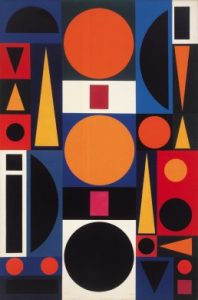Monday, June 15, 2020
Loud or Soft?
This activity will be the last one this school year! Here’s some more practice to develop your listening skills. Can you hear when music is loud or soft (quiet)? Test your skills with a Musicplay game by listening to music excerpts. Decide if you hear music that is loud or soft (quiet). Find the Loud Quiet Slow game on the Musicplay website by clicking HERE.
Here’s more practice with identifying what makes loud sounds and what make soft sounds. A printable copy of the worksheet is HERE.
Share your learning – send a photo!
Monday, June 8, 2020
Picture a Sound
The painting of family life shows a happy time. What sounds do you hear when you look at it?

The artist describes her painting: “We were always going to my grandparents’ house, so whatever they were involved in we would get involved in. In this picture, my grandmother is hanging up the laundry. We told her that the oranges needed picking so she said, “Well, go ahead and pick some.” Before she knew it, she had too many oranges to hold in her hands, so she made a basket out of her apron. That’s my brother up in the tree, picking oranges. The rest of us are picking up the one that he dropped on the ground.”
Name things you see in this picture. Now, name four things in the picture that make sounds and make a list of them. Can you recreate the sounds using your voice or a found instrument? As you create your sounds to represent the picture, think about why you chose them, if they have a steady beat or no steady beat, and if they are loud or soft. For example, the sound of a hands softly and randomly tapping a pillow could represent the flapping of clothes drying in the breeze. How can you tell the story in this picture with sound?
ART CONNECTION: You can create your own picture of a scene from your family. It could be a special event such as a birthday or an everyday scene with a description like Carmen Lomas Garza did for her painting.
Share your work – a recording of your sounds or a picture of family life.
If you are interested in learning more about the artist, you can visit her website HERE.
Monday, June 1, 2020
Engine, Engine Number Nine
You may wish to make a train cars out of paper to arrange as you follow along. For a printable .pdf, click HERE.
Listen to the song.
Now listen to this lesson, “Getting Faster and Slower with ‘Engine, Engine Number Nine’.” You will echo, then sing the song.
How would you describe the speeds at which you sang the song? Was it medium? Faster? Slower? You are talking about TEMPO – how fast or slow a song is.
Here’s more practice with tempo. Can you tell the difference between fast and slow music? Test your skills with a Musicplay game by listening to 10 music excerpts. Decide if you hear music that is fast or slow. Find the Fast Slow game on the Musicplay website by clicking HERE.
Share your music learning with me! Send photos!
Monday, May 25, 2020
The Eency Weency Spider
If the song is new to you, click HERE to sing along to a video with the actions.
If you already know the song well, let’s practice keeping a steady beat. As you listen to the music, you’ll notice that after a short introduction, the song is repeated 3 times – first it’sung, then played on a toy piano, then sung again – so when you get to the end, you can start again until you’ve done the map 3 times. Sing the words and show the beat by pointing to each box on the listening map. Remember that the beat is even, steady, and always the same. To download a .pdf of the listening map, click HERE.
Here’s more practice with the beat. Can you tell the difference between music with a steady beat and music with no steady beat? Test your skills with a Musicplay game by listening to 10 music excerpts. Decide if you hear music with a steady beat or no steady beat. Find the Beat or No Beat game on the Musicplay website by clicking HERE.
The final YOU WIN page with your score looks like this.
Send me a screenshot of the final score or a photo of you working through this activity!
Congratulations Liam, Jayden and Kerim for completing this week’s music activity!
Tuesday, May 19, 2020
The Elephant
This is a LISTENING MAP. As you listen to the music, ‘The Elephant’, use your finger to trace the lines. It’s a map that helps you know where you are and where you are going in the music.
‘The Elephant’ is part of a larger work called Carnival of the Animals. It was written by Camille Saint-Saens over 100 years ago. Notice how the composer chose the low sounds of a double bass to depict the lumbering elephant.
Here is a video of Ms. Chastko following the listening map. To watch, click HERE.
If you would like to download and print the listening map, a .pdf file can be found HERE.
Here is the music for you to use with the listening map. It begins with an introductory poem about the elephant.
Share your learning with me! Send photos of you doing this listening activity.
Monday, May 11, 2020
Listening Walk
Musicians are inspired by sounds in their environment. A listening walk provides an opportunity to focus on and delight in everyday sounds around us – sounds that we might not tune in to everyday.
The Listening Walk by Paul Showers and illustrated by Aliki reminds us of the wonders around us, especially if we slow down and listen. To have the story read to you, click HERE.
Ms. Chastko was inspired to take a listening walk. Join me by clicking HERE.
It’s your turn! You can take a listening walk inside your home or outside. Listen to become aware of the sounds around you. Be silent when you need to really hear the sounds. Draw, write, or digitally record your observations. I’ll share your listening walk on the blog.
Monday, May 4, 2020
What instrument do you hear?
As musicians, we are in the ‘listening business’. This activity will help develop your listening skills. Try identifying percussion instruments by their sounds. You will be directed to a deck of 10 cards. The first cards introduce the game. Then, to begin the game, click on the image of the iPod to hear a sound then click on the image of the instrument that makes the sound. Click HERE to begin the listening game. Play as often as you like. I’d like to see a photo of you playing the game. I’ll post your photo!
Tuesday, April 28, 2020
Instrument Making
We had so much fun making these shakers using paper plates and rice.
We played them to songs including this one, to the tune of ‘London Bridge’.
1. Shake your shakers in the air. Shake it here, shake it there.
Shake your shaker in the air. Shake your shaker.
2. Shake it high and shake it low. Shake it high, shake it low.
Shake it high and shake it low. Shake your shaker.
3. Shake it yes and shake it no. Shake it yes, shake it no.
Shake it yes and shake it no. Shake your shaker.
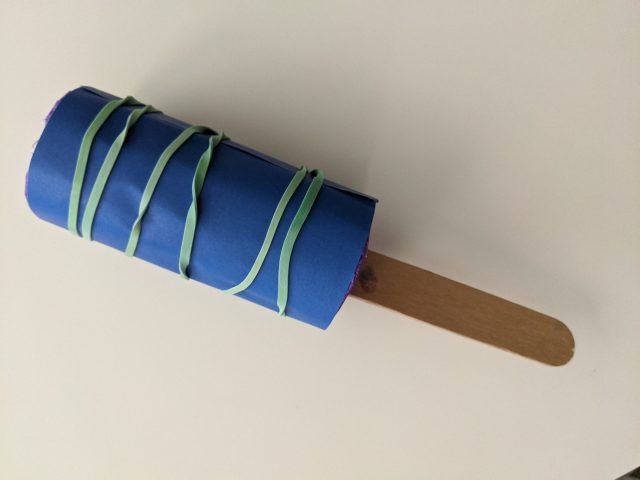
Make an instrument that you can use at home. Watch this video for ideas. Click HERE. I made a shaker after watching the video. What will you make? Take a picture of what you made and send it to me. I’ll post it on the blog. I’m looking forward to seeing your creations!
Monday, April 20, 2020
Mirroring
We can make shapes with our bodies! Here are some examples of children mirroring shapes with their bodies.
Mirroring means that your body will look just like another’s, changing the position of the left and right sides. You can try mirroring. Take your time, moving slowly and silently to make a shape, then hold it like a statue. When you are ready to watch and move with a mirroring video, click ➡ HERE. The pictures are set to some calming music by J.S. Bach called “Air on The G String”. Send me a photo of you mirroring any of the pictures in the video and I’ll post it with a sticker over your face for privacy.
Tuesday, April 14, 2020
Instrument Shapes
Hello Students and Families! To get us started with online music learning, here’s a review of a music activity we’ve done to explore names and sounds of instruments.
- Can you name an instrument from our music room that is a circle shape? Click HERE for the answer.
- … a rectangle shape? Click HERE for the answer.
- … a triangle shape? Click HERE for the answer
We created artwork using these instrument shapes. We were inspired by French artist, Auguste Herbin. His works use brightly coloured shapes. Here are three of his paintings.
Here is an example of the shape artwork we created.
Can you create a piece of art inspired by these shapes of instruments in the music room? Use any materials you have at home or can find in nature. Take a photo of it and share it with me by email. I will post any images I receive.

